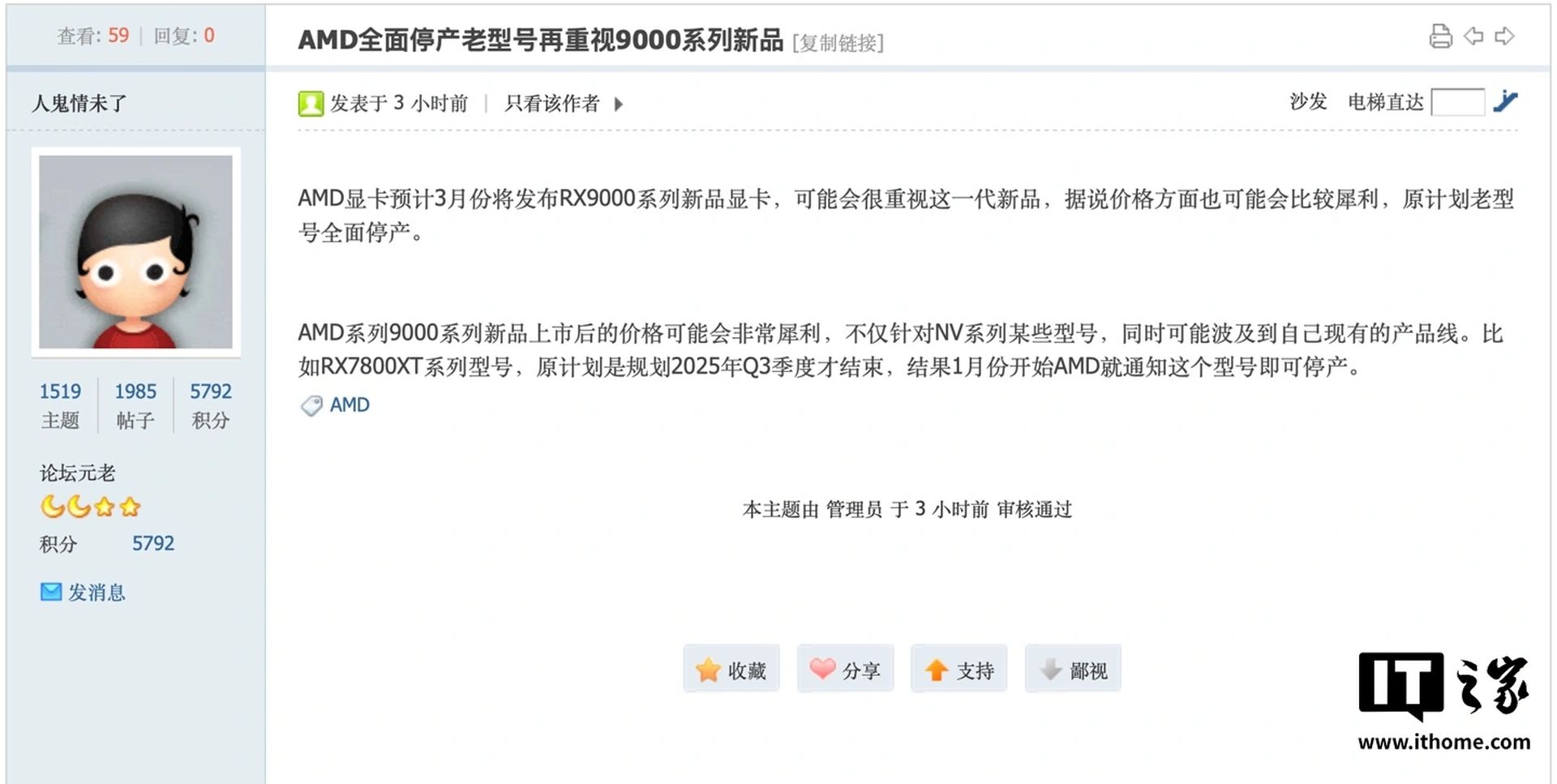AMD is reportedly set to launch its Radeon RX 9000 GPUs with aggressive pricing strategies aimed at competing with NVIDIA’s latest offerings, specifically targeting the mid-range and upper mid-range markets.
AMD to launch RX 9000 GPUs with aggressive pricing strategies
According to a report from IT Home, AMD may price the upcoming RX 9070 GPUs between $500 and $600, potentially impacting the sales of its existing RX 7800 XT graphics cards, which originally launched for $500. AMD had initially planned to produce the RX 7800 XT until Q3 2025, but has since halted production as of January to prioritize the new RX 9070 lineup.

The fastest GPU in the RX 9000 series, the RX 9070 XT, may be priced around $600. In comparison, speculations suggest that the RX 9070 could launch for approximately $500. These pricing strategies are a direct challenge to NVIDIA’s RTX 5070, which has a suggested retail price of $549. If performance leaks hold true, the RX 9070 XT could position itself competitively against the RTX 5070 Ti.
AMD pauses RDNA 4 launch to outsmart Nvidia
Focus on competitive features
AMD’s upcoming RX 9070 GPUs are expected to offer enhanced ray tracing performance compared to their predecessors, addressing a critical area where AMD has historically lagged behind NVIDIA. Recent findings from the Board Channels forums indicate that AMD’s pricing for the RX 9000 series is being described as “very sharp,” suggesting they will not only be competitive against NVIDIA’s RTX 5000 series but could also impact the sales of AMD’s own RX 7000 lineup.
Amidst supply chain shortages inflating prices for the RX 7800 XT, which was previously around $499, a more aggressive pricing model for the RX 9070 and RX 9070 XT could make AMD’s offerings more attractive. Observers speculate a price of around $549 for the RX 9070 XT and $449 for the RX 9070, which would place them below their NVIDIA counterparts by $50 and $100, respectively.
AMD has not officially announced definitive pricing or specifications for the RX 9070 models. However, the introduction of features such as 16GB of VRAM and improvements in ray tracing and upscaling technologies could offer AMD a more significant foothold in the competitive GPU market if adequately supported by game developers.
Featured image credit: Zii Miller/Unsplash





